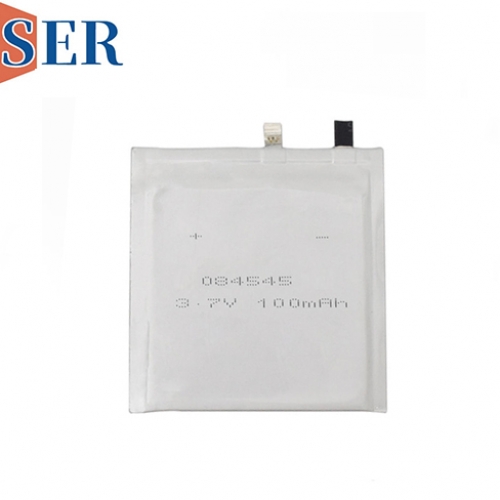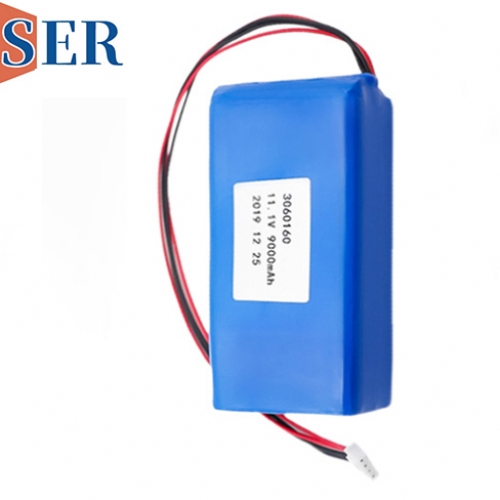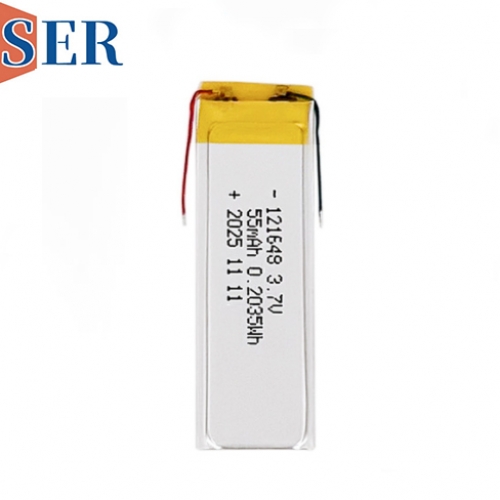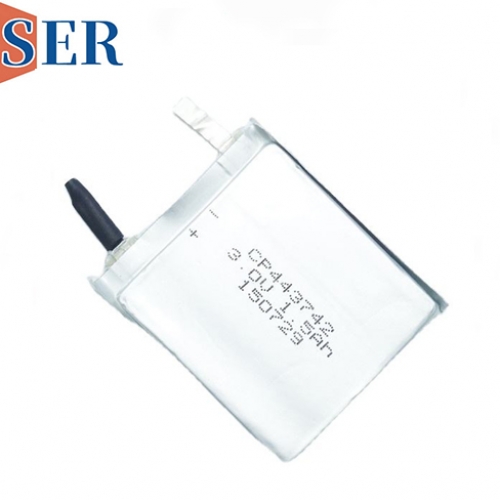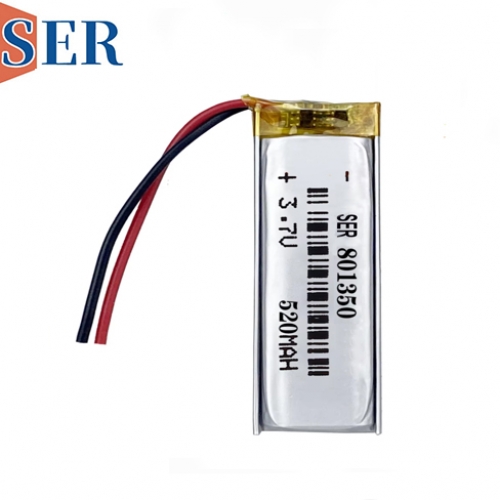Primary Lithium Soft Battery Ultra Thin 3v Limno2 Pouch Cell CP502525 550mAh for RFID Cow Tags
Primary Lithium Soft Battery Ultra Thin 3v Limno2 Pouch Cell CP502525 550mAh for RFID Cow Tags Animal Tags

Abstract
This article delves into the characteristics, applications, and advantages of Primary Lithium Soft Batteries, specifically the Ultra Thin 3V LiMnO₂ Pouch Cell CP502525 with a capacity of 550mAh, in the context of RFID cow tags, animal tags, and sensors. It explores the technical specifications, performance benefits, and the role these batteries play in enhancing the efficiency and effectiveness of animal tracking and monitoring systems. Additionally, the article discusses the market trends, challenges, and future prospects of using such batteries in the livestock industry.
1. Introduction
In the modern livestock industry, efficient tracking and monitoring of animals are crucial for various reasons, including health management, productivity optimization, and traceability. Radio Frequency Identification (RFID) technology has emerged as a powerful tool in this regard, enabling the identification and tracking of animals through unique tags. However, the functionality of these RFID tags and associated sensors heavily relies on a reliable power source. Primary Lithium Soft Batteries, particularly the Ultra Thin 3V LiMnO₂ Pouch Cell CP502525 with a capacity of 550mAh, have proven to be an ideal choice for powering RFID cow tags, animal tags, and sensors. This article provides an in-depth analysis of these batteries and their applications in the livestock sector.
2. Technical Specifications of the CP502525 Battery
2.1 Chemistry and Voltage
The CP502525 battery utilizes Lithium Manganese Dioxide (LiMnO₂) chemistry, which offers several advantages. LiMnO₂ batteries are known for their high energy density, stable voltage output, and long shelf life. The nominal voltage of 3V provides a consistent power supply to the RFID tags and sensors, ensuring reliable operation over an extended period.
2.2 Capacity and Energy Density
With a capacity of 550mAh, the CP502525 battery can store a significant amount of energy, allowing the RFID tags and sensors to operate for extended periods without requiring frequent battery replacements. The high energy density of the battery means that it can provide a substantial amount of power in a relatively small and lightweight package, which is essential for animal tags that need to be unobtrusive and comfortable for the animals to wear.
2.3 Form Factor and Size
The pouch cell design of the CP502525 battery makes it ultra-thin and flexible, allowing it to be easily integrated into the compact form factors of RFID cow tags and animal sensors. The dimensions of the battery are typically designed to fit seamlessly within the tag or sensor housing, minimizing the overall size and weight of the device.
2.4 Operating Temperature Range
The battery is designed to operate within a wide temperature range, typically from -20°C to +60°C. This makes it suitable for use in various environmental conditions, including extreme cold or hot climates, which are commonly encountered in livestock farming. The ability to withstand temperature fluctuations ensures that the RFID tags and sensors continue to function reliably, regardless of the weather conditions.
3. Applications in RFID Cow Tags and Animal Sensors
3.1 Animal Identification and Tracking
RFID cow tags equipped with the CP502525 battery enable farmers to uniquely identify each animal in their herd. The tags can be read by RFID readers at a distance, allowing for quick and efficient animal identification during various operations, such as feeding, milking, and veterinary checks. This helps in maintaining accurate records of each animal's health, growth, and productivity.
3.2 Health Monitoring
Animal sensors powered by the CP502525 battery can monitor various health parameters of the animals, such as body temperature, activity levels, and heart rate. By continuously collecting and transmitting this data to a central monitoring system, farmers can detect early signs of illness or stress in the animals, allowing for timely intervention and treatment. This proactive approach to health management can significantly improve animal welfare and reduce the risk of disease outbreaks in the herd.
3.3 Location Tracking
In addition to identification and health monitoring, RFID tags and sensors can also be used for location tracking of the animals. By integrating GPS or other location-based technologies with the RFID system, farmers can monitor the movement of the animals within the farm or grazing areas. This helps in optimizing the use of pasture resources, preventing animals from straying into restricted areas, and ensuring their safety.
3.4 Reproductive Management
For dairy and beef cattle farming, reproductive management is a critical aspect of herd productivity. RFID tags and sensors can be used to monitor the estrus cycles of the cows, allowing farmers to accurately time artificial insemination or natural mating. This can increase the conception rates and reduce the calving intervals, leading to improved herd reproductive performance.
4. Advantages of Using CP502525 Batteries in Animal Tags and Sensors
4.1 Long Battery Life
The high capacity and energy density of the CP502525 battery result in a long battery life, which is essential for animal tags and sensors that need to operate continuously for extended periods. This reduces the frequency of battery replacements, saving time and labor costs for farmers. Additionally, it minimizes the stress on the animals caused by frequent handling during battery changes.
4.2 Reliable Performance
The stable voltage output and wide operating temperature range of the battery ensure reliable performance of the RFID tags and sensors in various environmental conditions. This is crucial for maintaining the accuracy and integrity of the data collected by the devices, which is essential for effective animal management and decision-making.
4.3 Compact and Lightweight Design
The ultra-thin and flexible pouch cell design of the CP502525 battery allows for the development of compact and lightweight animal tags and sensors. This makes the tags more comfortable for the animals to wear, reducing the risk of tag loss or damage due to rubbing or entanglement. Additionally, the small size of the battery enables the integration of additional features and functionalities into the tags and sensors without increasing their overall size.
4.4 Cost-Effectiveness
Although the initial cost of the CP502525 battery may be slightly higher compared to some other battery types, its long battery life and reliable performance result in a lower total cost of ownership over the lifespan of the animal tags and sensors. This makes it a cost-effective solution for livestock farmers who are looking to invest in long-term animal tracking and monitoring systems.
5. Market Trends and Challenges
5.1 Market Trends
The market for RFID cow tags, animal tags, and sensors is experiencing significant growth due to the increasing demand for efficient livestock management and traceability. Farmers are adopting these technologies to improve animal welfare, productivity, and profitability. As a result, the demand for high-performance batteries like the CP502525 is also on the rise. Additionally, advancements in battery technology, such as the development of more energy-efficient and longer-lasting batteries, are expected to further drive the growth of this market.
5.2 Challenges
Despite the many advantages of using Primary Lithium Soft Batteries in animal tags and sensors, there are also some challenges that need to be addressed. One of the main challenges is the environmental impact of battery disposal. Lithium batteries contain hazardous materials that can pose a risk to the environment if not disposed of properly. Therefore, it is essential for farmers and battery manufacturers to implement proper recycling and disposal programs to minimize the environmental impact.
Another challenge is the cost of the batteries. While the long battery life and reliable performance of the CP502525 battery make it a cost-effective solution in the long run, the initial cost may be a barrier for some small-scale farmers. Battery manufacturers need to continue to work on reducing the cost of production while maintaining the quality and performance of the batteries to make them more accessible to a wider range of farmers.
6. Future Prospects
The future of Primary Lithium Soft Batteries in the livestock industry looks promising. With the continuous advancements in battery technology, we can expect to see even more energy-efficient and longer-lasting batteries in the coming years. These batteries will enable the development of more sophisticated and feature-rich animal tags and sensors, providing farmers with even more valuable insights into the health, behavior, and productivity of their animals.
Additionally, the integration of the Internet of Things (IoT) technology with RFID systems is expected to further enhance the capabilities of animal tracking and monitoring systems. By connecting the animal tags and sensors to the internet, farmers can access real-time data from anywhere, at any time, using their smartphones or other mobile devices. This will enable them to make more informed decisions and take immediate action when necessary, improving the overall efficiency and productivity of their livestock operations.
7. Conclusion
Primary Lithium Soft Batteries, particularly the Ultra Thin 3V LiMnO₂ Pouch Cell CP502525 with a capacity of 550mAh, play a crucial role in powering RFID cow tags, animal tags, and sensors in the livestock industry. Their high energy density, stable voltage output, long battery life, and compact design make them an ideal choice for these applications. By enabling efficient animal identification, health monitoring, location tracking, and reproductive management, these batteries contribute to improved animal welfare, productivity, and profitability for livestock farmers. Despite the challenges associated with battery disposal and cost, the market for these batteries is expected to continue to grow in the coming years, driven by the increasing demand for advanced livestock management technologies. With ongoing advancements in battery technology and the integration of IoT, the future of animal tracking and monitoring systems looks bright, offering even more opportunities for farmers to optimize their operations and achieve sustainable growth.

